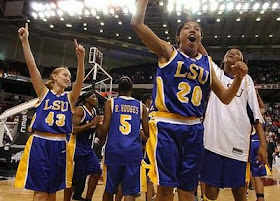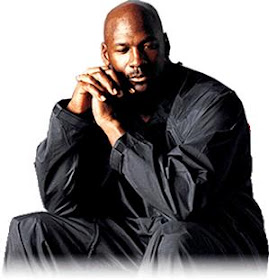 Came across a great article by Paul Meyer. I love reading Paul Meyer -- he is always motivational and inspirational. As a writer for the New York Times and the founder of the Success Motivation Instistute, he is someone who has altered the way a lot of people think -- and therfore live. Learn more at: http://www.pauljmeyer.com/.
Came across a great article by Paul Meyer. I love reading Paul Meyer -- he is always motivational and inspirational. As a writer for the New York Times and the founder of the Success Motivation Instistute, he is someone who has altered the way a lot of people think -- and therfore live. Learn more at: http://www.pauljmeyer.com/.
HOW TO SPOT A WINNER
Right out of the gate I'm always looking for THREE signs that indicate whether I'm dealing with someone who has a winner mentality. It doesn't mean they've accomplished all their desires or goals but I can tell rather quickly if they are on their way.
1. Winners are willing to accept responsibility for their life and behavior: Winners admit their mistakes and are willing to learn from them. Losers blame other people or circumstances for whatever happens to them.
2. Winners are willing to pay the price to get the job done: Winners get on with whatever needs to be done to accomplish the job at hand or to reach the goals they've set for themselves. Losers talk a great deal about what they are going to do but never get around to doing it.
3. Winners make a personal commitment to themselves and others: Winners mean it when they say, "You can count on me." They do what they say they'll do when they say they'll do it. Losers make idle promises and offer excuses for failing to deliver.
What separates a winner from a loser?
I have often said, "When you run into a problem, you're going to have to find who is in charge of your life and get them to help you change." My tongue in cheek point is this:
The one in charge of your life is YOU!
The two things that control your life are your ATTITUDES and your BEHAVIORS and YOU get to choose both of them. While you may have some negative attitudes and behaviors at the moment, it is YOU who decides whether to keep them or to start the process of change.
When you master both your attitudes and your behaviors, you can pretty much control the destiny of your life. Winners choose to take the necessary steps to re-program themselves to have a positive mindset and to do whatever it takes to accomplish their goals. Winners are willing to PAY THE PRICE!
Losers are lazy and choose to keep their negative attitudes and behaviors, accepting anything that happens as fate rather than the result of their own choices while using all their energy to complain about being victimized by other people and circumstances.Why you may not be winning.
If you believe your attitudes and behaviors are generally positive but you are not winning in life, you might want to consider the following:
· You may have not set high enough goals. When people are not challenging themselves to be the best they can be, they become bored, disappointed, and negative. Winners have a written plan that is broken down into daily goal-setting activities that can be measured and monitored, words that losers hate.
· You may be allowing obstacles on the way to your goals to derail and defeat you. There will always be obstacles no matter what you are trying to accomplish! I've learned to view obstacles as opportunities for growth and learning; as part of the process of honing my strengths and minimizing my weaknesses; as stepping stones to the next level.
· You may be concentrating on your problems and not your power. Winners know they have weaknesses, but they appreciate their abilities far more. They keep doing whatever is necessary to learn, grow, and improve their skills. Remember the old adage based on physics: "A body in motion tends to stay in motion."
· You may be selling out your principles and values in order to win. If so, STOP! Never, ever do this. Whatever you "win" in the short haul will be useless. You'll pay a high price for abdicating your principles. Winners never sacrifice their values! Any time I've ever "lost" in life because I refused to compromise my principles, I found that God rewarded me with a much greater blessing down the road.
Winners have an electric, enthusiastic vibration about them. They refuse negative mindsets, concentrate on their strengths; are committed to grow and improve, and never compromise their principles. You can count on them; they keep their word. They take personal responsibility for their choices. They are willing to pay the price. The bottom line is you just can't fake being a winner, because a winner is easy to spot!
SO, ARE YOU A WINNER?!?!
+of+SEC+PARTY.jpg) In his book “Teamwork Makes The Dream Work,” John Maxwell said the following:
In his book “Teamwork Makes The Dream Work,” John Maxwell said the following: 


 Came across a great article by
Came across a great article by 







